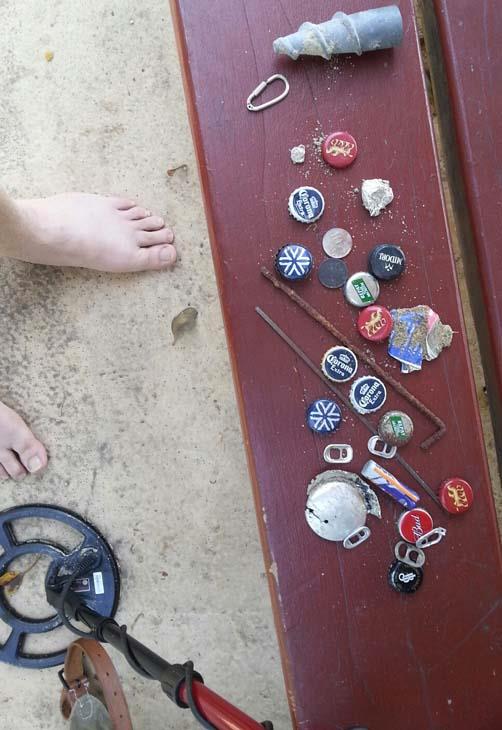I found when I had my 305, it would ground balance nicely on the dry sand, but for wet, you simply have no choice but to reduce the sensitivity till the chatter was at a minimum. Probably better off sticking to dry sand a picking off recent drops or deeper coin/jewllery targets, otherwise the chatter will drive you nuts chasing ghost targets (the signals that keep moving the deeper you dig, usually to the side of the hole, or they may just disappear altogether).
As I found with the Tesoro Vaquero on the beach, when using the discrimination mode, it will also tend to reduce the amount of falsing, but also reduce the depth and number of targets found. I used to run all-metal mode in the dry sand for maximum depth (dig everything), but change over to discrimination mode with reduced sensitivity when close to the still damp high tide mark.
One of the most frustrating parts of detecting on beaches with a single frequency VLF detector, is digging in dry sand, only to find the sand gets damp at depth, resulting in false signals. As mentioned above, this is where you get the false signals in the hole, or a constantly moving signal towards the edge of the hole. In this case, sometimes a pinpointer can help out due to its small detection area, it will false to a degree as the sand gets wetter, but still usually effective enough to locate or discount a target. The 305 dectector coil covering a larger area in this case, tends to crack a fruity trying to decipher information from both the wet sand at the bottom of the hole, and the dryer sand further up, resulting in falsing from the conductive salt water. This will often lead an inexperienced detectorist to dig a hole to china, wondering when the hell he/she was ever going to reach the target.





